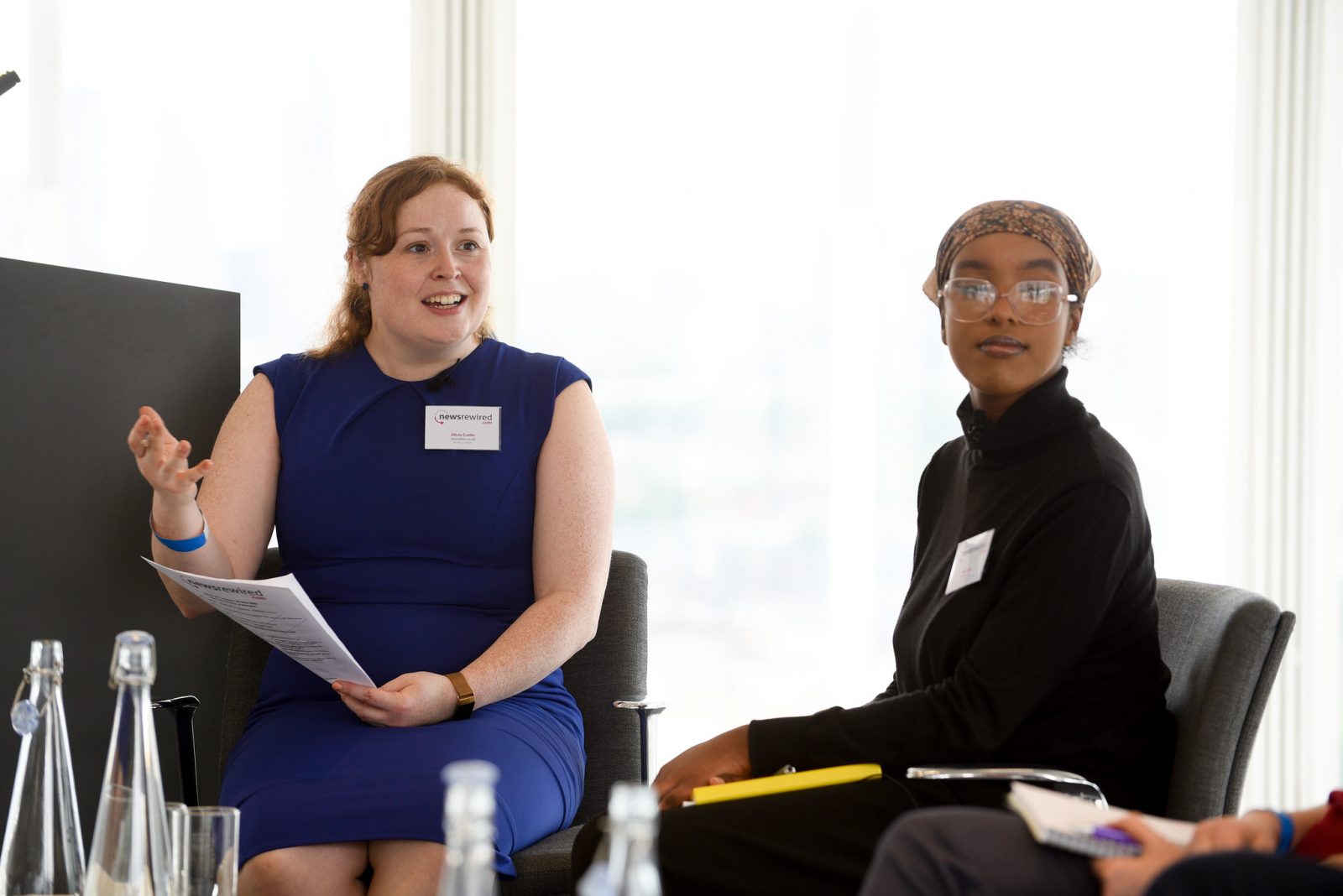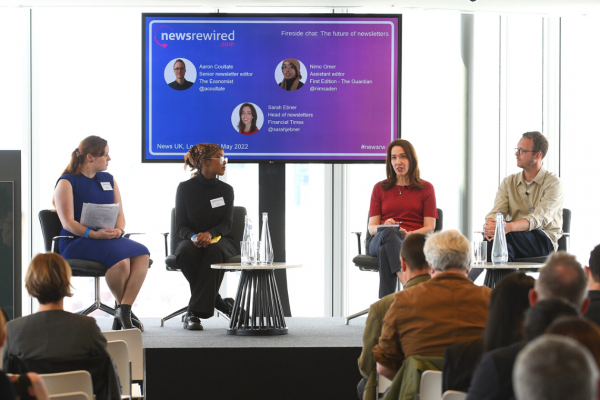The value of newsletters as standalone content offerings – Newsrewired panel
Newsletters should be treated as valuable standalone products through which to engage audiences, according to an esteemed panel at last week’s Newsrewired event in London.
As the subscription boom continues, newsletters are being looked at afresh for their role in audience segmentation, converting readers to subscribers and the opportunities for gathering individual feedback. Magazines and publishers have therefore been revamping the newsletter format, and outside of traditional media organisations, too, newsletter hosting platforms like Substack are delivering increasing popularity – and lucrativeness – for individual writers.
All this and more was discussed by a panel featuring the Financial Times’ head of newsletters Sarah Ebner, Nimo Omer, assistant editor of The Guardian’s new newsletter offering, First Edition, and Aaron Coultate, senior newsletter editor at The Economist. It was chaired by Olivia Crellin, acting editor, journalism.co.uk.
Newsletters as standalone content
For Nimo Omer, newsletters are a way of increasing the ways people can access the newspaper’s content. Of First Edition, its revamped flagship current affairs newsletter, she said: “The Guardian has been working on relaunching its newsletter offering for a long time, and when I joined as a writer and reporter, it was to help this extremely comprehensive newsletter come to life.
“The whole point is to offer flexibility and fluidity to our readership, so that they can get a whole bunch of content formats from us. We want to make sure our audience can access our journalism in whatever the best way may be for them.”
This is all part of a wider strategy at The Guardian to create community through podcasts and multimedia. “The primary goal is no longer to push people to the site,” explained Omer. “We want people to read and engage with every part of the newsletter, and for it to be a product in and of itself.”

The FT’s Sarah Ebner, who also used to head up newsletters at The Telegraph, agreed. “Newsletters should stand by themselves,” she said. To this end, they have hired well-established journalists like Stephen Bush with specific remits, like UK politics, to write daily newsletters that are available only to subscribers.
“The FT is a subscriptions-first business, and all of our newsletters are part of that. We have two tiers: premium and standard, all written by our top writers. Traditionally newsletters were used as a loyalty and retention mechanism, but we’ve also started to use them for acquisition now. We did that previously at The Telegraph, so we know they can be used in that way.”
The panel discussed a personal approach to newsletter-writing, one in which readers can write back to editors or respond directly to the email to give feedback. One and a half months in, The Guardian is still in an experimental phase with First Edition. “But we know for sure that flexibility is going to be a central part,” said Omer. “We provide direct feedback channels with our personal emails, and speak to people directly, which can be overwhelming – we have to be discerning about what feedback we take on.
“A big part of it is keeping the tone of the newsletters conversational – we want it to sound like something interesting you would talk about with your mate at the pub, even if that thing is the Northern Ireland Protocol.”
Adding personality and building community
Aaron Coultate talked about the importance of the personal approach. The Economist’s newsletters provide a curious, almost behind-the-scenes insight for readers because they are authored by a named journalist with an accompanying photo – an approach distinct from the newspaper’s singular editorial voice, which does not include bylines.
“We have experimented with a Sunday edition that has an introduction from one of our senior editors, with an email address included,” Coultate explained. “We don’t have ‘personalities’ in the sense that we have one star writer or well-known name, but we have tried to create newsletters with personality, with a rotating cast of writers. The photo byline instantly differentiates them from other platforms, so you can see our journalists’ faces and names.”
“Traditionally newsletters were used as a loyalty and retention mechanism, but we’ve also started to use them for acquisition now.”
Sarah Ebner, FT
Bringing in new audiences
At the FT, the “north star” of the publication is lifetime value. “This is a very specific metric to do with how much a customer is worth now, and in the future,” explained Ebner. “Newsletters feed into that brilliantly, because we have a whole lot of very engaged people.
“People on a trial are 134% more likely to subscribe if they are signed up to a newsletter – so newsletters are absolutely essential to any type of businesses that has a subscriptions or membership offering. Some of our latest newsletters – like Inside Politics with Stephen Bush – are part of a strategy to drawn in slightly different audiences, who might be younger and not able to afford a premium subscription for example.”
Closing down open rates
On the subject of open rates, Ebner did not hold back. “Open rates are dead, basically,” she said. Because of some changes made by Apple, open rates are artificially inflated. According to Substack, 55% would be a good open rate – but many publishers’ are lower than that.
So what metric would make more sense? Looking across an organisation internally, perhaps: “You can compare within – looking from newsletter to newsletter,” said Ebner. “We are looking at other ways of measuring too. One of the things we are trying to do is to get other forms of engagement with readers, like a survey at the bottom asking what they think of this newsletter. They click a number from one to five, which takes them through to a full survey – and the comments we get are really useful.”
The Economist also makes use of surveys at the bottom of newsletters, said Coultate. He agreed that other metrics now supersede open rate: “Open rates became less reliable, and so reader feedback has become more important,” he said. “The survey is a super useful snapshot of what readers think. We also have individual email addresses, which can create a really nice feedback loop.” Like at The Guardian, they then use that reader feedback in upcoming editions.
“We keep an eye on click-through rates for certain newsletters still, but it’s no longer the be-all and end-all,” added Coultate. “We look at the general list size; is the recipient list growing each week? Are they bouncing? If you’ve got people sticking around or the audience is growing every week, that’s a really positive sign.”
Images courtesy of Mark Hakansson/Mousetrap Media









